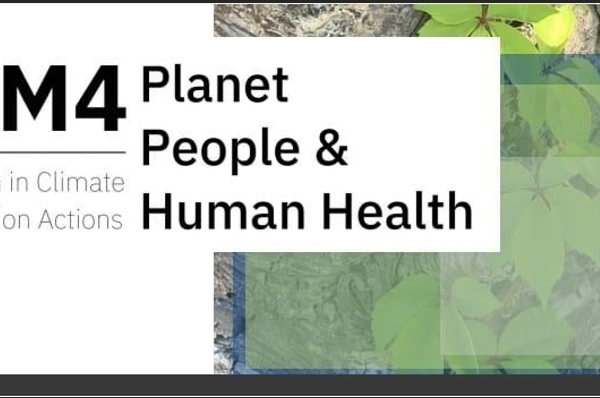Background
Climate change finance mechanisms such as the Clean Development Mechanism (CDM) were previously designed in ways that would only benefit large developing countries like China and India that have enhanced technological capacity and capabilities, providing attractive environments for state and non-state actors seeking to leverage climate finance to support their international investments. Africa in its entirety, including South Africa and North African countries, has received only 3% of accumulated international investment under the CDM. Poor countries, including poor and marginalised women and men, gained very little, if at all, while “neutral” policy mechanisms served only to cement existing competitive leverage and associated global inequities. The Climate Relevant Innovation System Builders (CRIBS) approach, if governed in an optimal and democratic manner, could correct these past deficiencies of international climate policy.
The idea of sustaining climate innovation systems through locally owned and governed, long-term institutions, financed and supported by international climate policy structures, could support an adjustment from one off, large projects, towards long-term, sustainable change in climate compatible, socially just pathways. Noting the potential and opportunities to unlock trillions of dollars new and additional climate funding, via the framework of the new global Paris Climate Agreement adopted in Marrakech last year, African policy makers are presented with an ample opportunity to effect change. Utilizing nationally devolved, more bottom-up structure espoused by the Paris Climate Agreement and acting as a coordinated block of countries, East African nations could coordinate implementation of their Nationally Designated Commitments (NDCs) in ways that leverage funding to build new innovation systems around low-carbon energy technologies. Research has demonstrated this will underpin long term economic growth and poverty alleviation, but only if pursued via a policy approach firmly rooted in supporting East African countries in defining their own, context-specific needs, upon which climate finance will then be leveraged to support. Premised on a partnership involving the African Sustainability Hub (ASH) and the University of Sussex East African policy makers and practitioners are now able to access training and capacity development (funded by the UK ESRC) on how Climate Relevant Innovation System Builders (CRIBS) work and can be integrated in to the delivery of Nationally Determined Contributions. The upcoming two day workshop, to be held on the 11th and 12th of April 2017, builds on the increasing recognition of the role of international climate finance and low carbon economic growth in addressing climate change in Africa, noting that the Paris Agreement acknowledged that low carbon technology transfer and innovation systems are key in implementing mitigation and adaptation measures in developing countries and particularly Africa.
Main Aim
This workshop aims to provide climate policy makers in East Africa with the knowledge and capabilities necessary to leverage climate finance via their NDCs and use this to build innovation systems, catalysing increased flows of climate technologies to East Africa.
Project activities
The workshop was organized by the Africa Sustainability Hub (ASH), a networked research and knowledge exchange hub that convenes world leading experts on innovation systems and low carbon technology and development in Africa. ASH is a partnership between STEPS Centre at the University of Sussex, Stockholm Environment Institute (SEI), Africa Technology and Policy Studies (ATPS) and ACTS, where the secretariat is hosted. The workshop brought together key policy makers and practitioners selected from the East African region in addition to development partners who have supported climate change strategies, actions and innovations in Africa. The policy makers and practitioners were trained on various aspects of building innovation systems. The caucus provided one of the first platforms for East African policy practitioners, makers and their development partners to exchange ideas, experiences and challenges for building innovation systems for addressing climate change in the context of the sustainable development goals. This went on to enable policy makers and practitioners maximize institutional and financial opportunities for building climate compatible innovation systems within their countries.
Main Outputs
Upon completion of this workshop and accessing the follow-on support, the participants will be equipped to;-
- Implement their country’s NDC (or INDC) in ways that will leverage maximum international climate finance to build innovation systems around new and existing climate technologies. By the end of the event, the participants will have identified priority actions for immediate implementation after the workshop.
- Understand the value of and how to implement, “Climate Relevant Innovation-system Builders” (CRIBs) as the key mechanism through which the NDCs are to be implemented. CRIBs are proposed networks of institutions based in low and middle income countries facilitating activities that build and strengthen innovation systems around locally appropriate low-carbon technologies. They mirror best practices in other nations that have been successful in harnessing science and technology to deliver significant economic development.
- Access follow-on resources via a dedicated web page.
- Access monthly expert support for 12 months following the training event from climate policy experts at ACTS and the University of Sussex, who will assist in the design and implementation under the NDCs.
- Provide a platform for knowledge and experience sharing with other East African policy makers, learning from best practice and taking advantage of regional learning and implementation opportunities
Reports and Publications
Ockwell, David and Byrne, Robert (2015) Climate relevant innovation-system builders (CRIBs). The African Technopolitan, 3. pp. 83-85
AU CRIBs Training Evaluation Report


